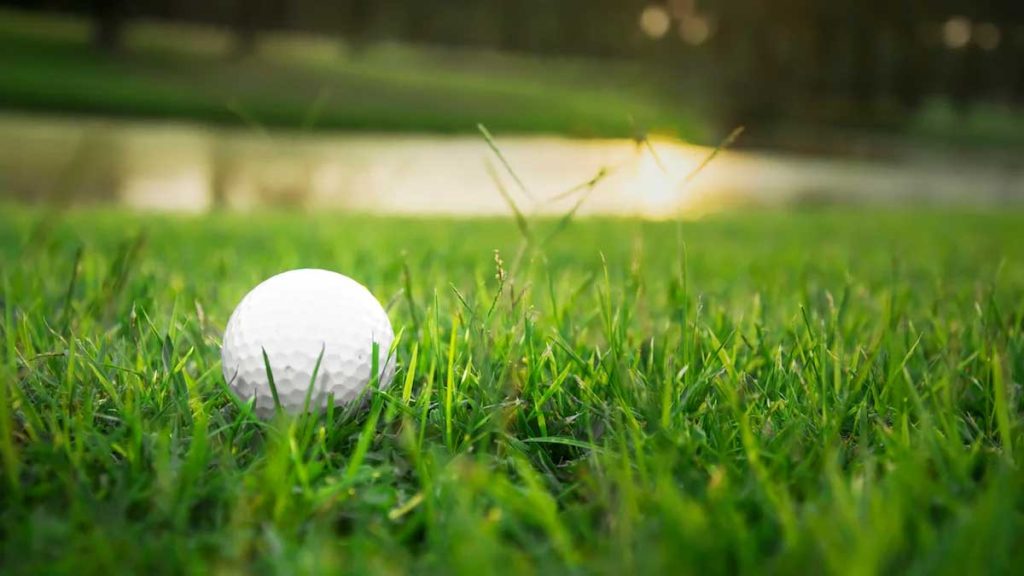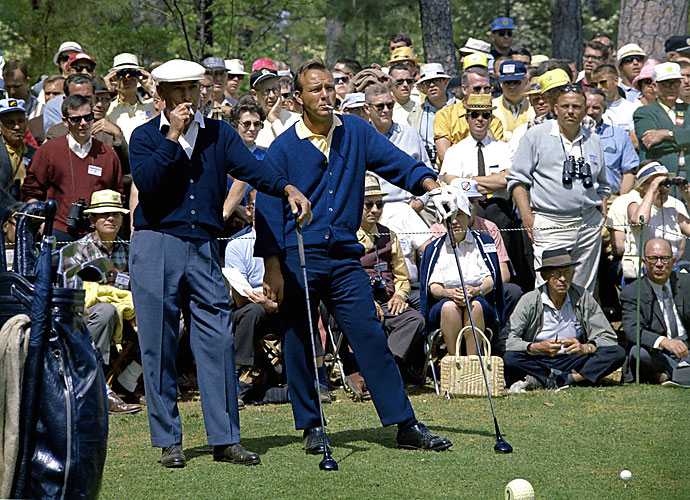Discover the Surprising Weight: How Heavy is a Golf Ball?
A golf ball’s weight is approximately 1.62 ounces or 45.93 grams. Golf balls have a standard weight limit for official competitions.
Golf balls are an essential element of the game of golf, and they come in various sizes, types, and weights. However, the standard weight of a golf ball is about 45. 93 grams or 1. 62 ounces. Golf balls’ weight limit is set by the united states golf association (usga) to ensure fair competition.
The usga has set a quality limit for golf balls between 1. 62 and 1. 62 ounces or 45. 93 and 46. 28 grams. Golf ball manufacturers must comply with these regulations if they want their balls to be used in flagship usga events. Knowing a golf ball’s weight is crucial when playing the game since it can affect the ball’s distance, trajectory, and spin.

Anatomy Of A Golf Ball
Golf balls have come a long way since the beginning of the sport. Initially, the golf balls were made of wood, which was eventually replaced by feathers, and later, rubber. Today, golf balls are composed of multiple layers. Understanding the anatomy of a golf ball is imperative to choosing the right one.
In this section, we will be discussing the different layers of a golf ball, the relation of the core to the ball’s weight, and the impact of the core on the ball’s performance.
Overview Of The Different Layers Of A Golf Ball
Golf balls are designed with multiple layers to enhance their performance and make them suitable for different playing preferences. There are three main types of golf balls, each with different layers:
- Two-piece golf balls: These balls have a solid rubber core and a hardcover. They are inexpensive and preferred by beginners and casual golfers.
- Three-piece golf balls: These balls have a soft rubber core, a mantle layer, and a cover. They offer better control and spin than two-piece balls, making them the choice of intermediate golfers.
- Four-piece golf balls: These balls have a soft rubber core, an inner mantle layer, an outer mantle layer, and a cover. They have the highest spin, control, and distance compared to the other two types and are preferred by advanced golfers.
Explanation Of The Core And Its Relation To The Golf Ball’S Weight
The core is the innermost layer of a golf ball. It is responsible for the ball’s weight, compression, and energy transfer. The core is usually made of rubber or synthetic materials with different sizes and densities. The core’s size and density determine the ball’s weight, with heavier cores resulting in heavier balls.
However, the weight of the core alone does not affect the ball’s performance or distance.
Discussion Of The Core’S Impact On The Golf Ball’S Performance
The core is the most critical component of a golf ball that impacts its overall performance. A smaller and denser core produces a harder ball with less spin, leading to more distance. On the other hand, a larger and softer core creates a ball with more spin and a lower trajectory, suitable for higher handicappers.
The core’s compression affects the ball’s distance, with lower compression balls traveling farther than higher compression balls.
Choosing the right golf ball is crucial for improving your accuracy and distance on the course. By understanding the anatomy of a golf ball, you can make an informed decision based on your playing style and skill level.
Measuring The Weight Of A Golf Ball
Overview Of The Different Methods Of Measuring A Golf Ball’S Weight
Golf ball weight is an essential factor that affects its performance. Several methods measure the weight of a golf ball, including mass and gravity measurements. The weight of a golf ball is measured in ounces or grams. Here are some of the most common methods of measuring golf ball weight:
- Mass measurement: This method uses a scale to measure the mass of a golf ball in grams or ounces.
- Gravity measurement: This method uses a pendulum-like instrument to measure the weight of the golf ball in grams or ounces.
Introduction To The Usga Standards For Golf Ball Weight
The united states golf association (usga) sets the standard for the weight of a golf ball. According to usga, the weight of a golf ball should not exceed 1. 620 ounces or 45. 93 grams. The usga has also established a standard tolerance of 0.
120 ounces or 3. 39 grams. This tolerance means that the weight of any golf ball cannot differ by more than 0. 120 ounces from the established weight standard.
Discussion Of How Different Factors Can Affect A Golf Ball’S Weight
Several factors can influence the weight of a golf ball. Some of these factors include manufacturing variations, temperature, humidity, and altitude.
- Manufacturing variations: The manufacturing process can impact the consistency of the golf ball weight.
- Temperature: The temperature affects the weight of the golf ball. In cooler temperatures, golf balls tend to be denser, heavier, and fly shorter distances. On the other hand, warmer temperatures can cause golf balls to expand, increasing their size and decreasing their weight.
- Humidity: Humidity can make golf balls absorb moisture, increasing their weight.
- Altitude: At higher altitudes, the air pressure is lower, causing golf balls to travel further due to less air resistance. As a result, some golfers prefer lighter golf balls to counteract these environmental factors.
The weight of a golf ball is a critical factor that affects its performance. Several methods can measure the weight of a golf ball, and the usga sets a standard for golf ball weight. These factors, including manufacturing variations, temperature, humidity, and altitude, can also affect the golf ball’s weight and performance on the course.
The Surprising Weight Of A Golf Ball
Contextualizing The Weight Of A Golf Ball In Comparison To Other Objects
A golf ball is a small and seemingly insignificant object. But, have you ever wondered how heavy a golf ball actually is? A standard golf ball weighs around 45 grams or 1. 6 ounces, which is approximately the weight of a slice of bread.
To put it into perspective, here are some comparisons to other objects:
- A golf ball weighs about the same as an egg
- A golf ball is lighter than a billiard ball which weighs around 170 grams or 6 ounces
- A golf ball is heavier than a tennis ball which only weighs around 57 grams or 2 ounces
Explanation Of How Minor Differences In Weight Can Have A Significant Impact On A Golf Ball’S Performance
When it comes to golf, the weight of the ball is significant in terms of its performance. Even a small variation in weight can impact your game. Here are some ways in which the weight of a golf ball affects its performance:
- A heavier golf ball may provide greater distance if struck correctly, but it’s harder to control
- A lighter golf ball may not travel as far but offers more control and better accuracy
- The weight of the golf ball affects the way it reacts when struck by a club and can influence the ball’s spin, trajectory, and how it lands
Discussion Of The Surprising Weight Of Different Types Of Golf Balls
Golf balls are designed with different characteristics to cater to individual playing styles. Surprisingly, golf balls can vary in weight depending on their intended use. Here are some examples of different types of golf balls and their weights:
- Standard golf balls weigh around 1.6 ounces
- Tour-level golf balls weigh slightly more than standard balls and are designed to provide extra distance
- Women’s golf balls are designed to weigh less than standard balls and have a softer feel
- Junior golf balls are designed to weigh even less than women’s balls and have a much slower speed
Understanding the weight of a golf ball and how it impacts your game is crucial. Keep in mind that even small differences in weight can affect the ball’s performance, so choose a ball that fits your playing style to ensure a better game.
Choosing The Right Golf Ball For You
How Heavy Is A Golf Ball?
If you’re a golfer, you know choosing the right golf ball can make a difference in your game. But how much does weight play a role in your decision-making process? Let’s look at the factors to consider when choosing a golf ball and the impact that weight can have on your game.
Factors To Consider When Choosing A Golf Ball
When selecting a golf ball, it’s important to consider three main factors:
- Swing speed
- Spin
- Feel
Swing speed refers to how fast you swing the club. Spin affects the ball’s trajectory and how it reacts when it hits the ground. Finally, you want a ball that feels good when you hit it.
Discussion Of How Weight Can Play A Role In Your Decision
The weight of a golf ball can impact your game in a few ways. A heavier ball may travel farther but at a lower height. It can also help lower your spin rate and provide more control in windy conditions.
However, a lighter ball can help you increase your swing speed, which can result in a greater distance traveled. It can also help you generate more spin and achieve a higher trajectory.
Ultimately, the weight of your golf ball comes down to personal preference and your specific playing style. Experiment with different weights to see which one feels best for you.
Overview Of Popular Golf Ball Brands And Their Different Weights
Many popular golf ball brands offer various weight options for players to choose from. Here’s a quick overview of some of the most popular brands and their different weight options:
- Titleist: The titleist pro v1 and pro v1x come in 14 different weight and color combinations.
- Callaway: Callaway chrome soft and chrome soft x come in 12 different weight options.
- Taylormade: The taylormade tp5 and tp5x come in three weight options: standard, soft, and x.
- Bridgestone: Bridgestone Tour bx comes in 16 different weight options.
- Srixon: The srixon z-star xv and z-star xv5 come in five different weight options: standard, soft, pure white, tour yellow, and tour white.
Choosing the right golf ball can be the difference between a good and a great game. Remember to consider swing speed, spin, and feel when choosing your ball. Don’t be afraid to experiment with different weights and brands to see what feels best for you.
Frequently Asked Questions Of How Heavy Is A Golf Ball
How Much Does A Golf Ball Weigh?
A regulation golf ball weighs no more than 1. 62 ounces, or 45. 93 grams.
What Is The Official Size Of A Golf Ball?
The official size of a golf ball is no less than 1. 68 inches, or 42. 67 millimeters in diameter.
Does The Material Of A Golf Ball Affect Its Weight?
Yes, the materials used in making a golf ball can impact its weight. Some modern golf balls are designed to be lighter for increased distance.
Conclusion
After researching the weight of golf balls, it is clear that there is no standard weight for a golf ball. The weight of a golf ball can vary depending on the type of ball, brand, and intended purpose. However, the general weight range for a golf ball falls between 45 to 46 grams or 1.
62 ounces. While this may seem light, the weight of a golf ball plays a crucial role in achieving optimal distance and accuracy on the course. It is important to note that there are specific rules and regulations set by golf governing bodies to ensure fairness and consistency in the sport.
Whether you’re a professional golfer or just starting out, understanding the weight of a golf ball can help you make informed decisions when selecting the right ball for your game. Remember, every small detail counts when it comes to improving your performance on the golf course.




I have been browsing online greater than three hours these
days, yet I by no means discovered any fascinating article like yours.
It is lovely worth enough for me. Personally, if all
site owners and bloggers made excellent content material as you
probably did, the net will likely be much more helpful than ever before.
Thank you so much